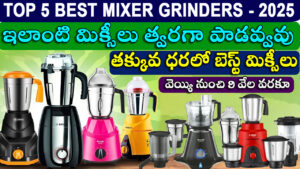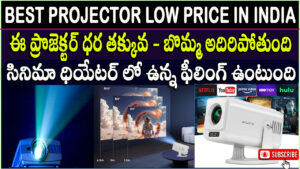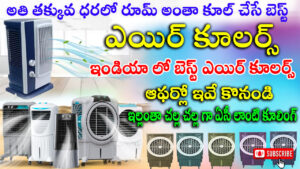When purchasing a water purifier, it’s important to consider factors like water quality, type of purifier, and the specific features you need. Here’s a detailed Best Water Purifier Buying Guide to help you make an informed decision:
1. Understand Your Water Quality

Before choosing a water purifier, you must know the quality of the water you’re consuming. Consider the following:
- TDS (Total Dissolved Solids): TDS levels measure the amount of dissolved impurities like minerals, salts, and metals in water. The TDS level affects which type of purifier you need.
-
- Low TDS (less than 500 ppm): You can use UV or UF (Ultrafiltration) purifiers.
- High TDS (above 500 ppm): You’ll need a RO (Reverse Osmosis) purifier to remove salts and harmful minerals.
- Water Contaminants: Identify specific contaminants in your water such as bacteria, viruses, chlorine, heavy metals (like lead or arsenic), and pesticides. You may need additional filters depending on the water source.
2. Types of Water Purifiers
There are several types of water purifiers, each suited for different water quality and purification needs:
a) Reverse Osmosis (RO) Purifiers
- How It Works: RO purifiers use a semipermeable membrane to remove dissolved impurities, salts, and harmful chemicals from water.
- Best For: High TDS levels (hard water, salty water, or water with heavy contamination).
- Pros:
- Removes a wide range of contaminants, including heavy metals, salts, bacteria, and viruses.
- Improves the taste of water by removing harmful substances.
- Cons:
- Wastes water (typically 3-4 liters of water is wasted for every liter purified).
- Removes beneficial minerals like calcium and magnesium.
- Additional Feature: Some RO purifiers come with TDS controllers to add essential minerals back into the water.
b) Ultraviolet (UV) Purifiers
- How It Works: UV purifiers use ultraviolet light to kill bacteria, viruses, and other microorganisms present in the water.
- Best For: Low TDS water that has microbial contamination.
- Pros:
- Effective at killing bacteria and viruses.
- Retains essential minerals and doesn’t waste water.
- Cons:
- Does not remove dissolved solids or heavy metals.
- Water must be clear (UV doesn’t work well in turbid water).
c) Ultrafiltration (UF) Purifiers
- How It Works: UF purifiers use a membrane to remove suspended particles, bacteria, and other large contaminants.
- Best For: Water with low to moderate contamination, and low TDS.
- Pros:
- Works without electricity (depending on the model).
- Retains essential minerals and doesn’t waste water.
- Ideal for well water or water with low contamination.
- Cons:
- Cannot remove dissolved salts and chemicals, so not suitable for high TDS water.
d) Activated Carbon Filters
- How It Works: Activated carbon filters absorb chlorine, bad odors, and some chemicals.
- Best For: Municipal or treated water with chlorine and organic contaminants.
- Pros:
- Improves taste and odor of water.
- Cost-effective and easy to maintain.
- Cons:
- Doesn’t remove minerals or microorganisms.
- Not suitable for untreated or highly contaminated water.
e) Water Softeners
- How It Works: Water softeners remove calcium and magnesium, which cause water hardness.
- Best For: Hard water, typically in areas with high levels of calcium and magnesium.
- Pros:
- Prevents scale buildup in pipes and appliances.
- Softens water for skin and hair.
- Cons:
- Doesn’t purify water of other contaminants (e.g., bacteria or viruses).
- Requires regular salt refills for regeneration.
3. Key Features to Look for
- Capacity: Choose a water purifier with an adequate storage tank to meet your daily water consumption needs. Most purifiers have storage capacities ranging from 5 to 15 liters.
- Filter Life: Check the filter life and replacement frequency. A good quality filter should last at least 6-12 months before needing replacement.
- Mineral Addition: Some RO purifiers come with a Mineralizer or TDS controller, which helps to restore essential minerals to the purified water, making it healthier and more balanced.
- Filter Stages: Some purifiers have multiple stages of filtration (e.g., pre-filter, RO, UV, and post-filter). A multi-stage filtration system ensures thorough purification.
- Indicators: Many advanced purifiers come with indicators for filter replacement, TDS levels, or UV functionality. This feature makes it easier to maintain the purifier.
- Smart Features: Some purifiers come with smart features such as Wi-Fi connectivity, automatic filter replacement alerts, and water consumption tracking. These can make managing the purifier more convenient.
4. Power Consumption
Consider the power consumption of the purifier, especially if you’re going for an RO or UV purifier. Choose an energy-efficient model to reduce running costs, especially if you’re using the purifier frequently.
5. Installation and Maintenance
- Installation: Some purifiers require professional installation (especially RO purifiers), while others are easy to install on your own (like UV or UF purifiers).
- Maintenance: Make sure the purifier is easy to clean, with easily replaceable filters. Regular maintenance ensures longevity and optimal performance.
6. Brand and Warranty
Look for trusted brands like Kent, Aquaguard, Blue Star, LG, Brita, Whirlpool, and HUL Pureit. Good after-sales service and warranty coverage are important as water purifiers may need repairs or maintenance over time.
- Best RO Water Purifiers in India 2025








